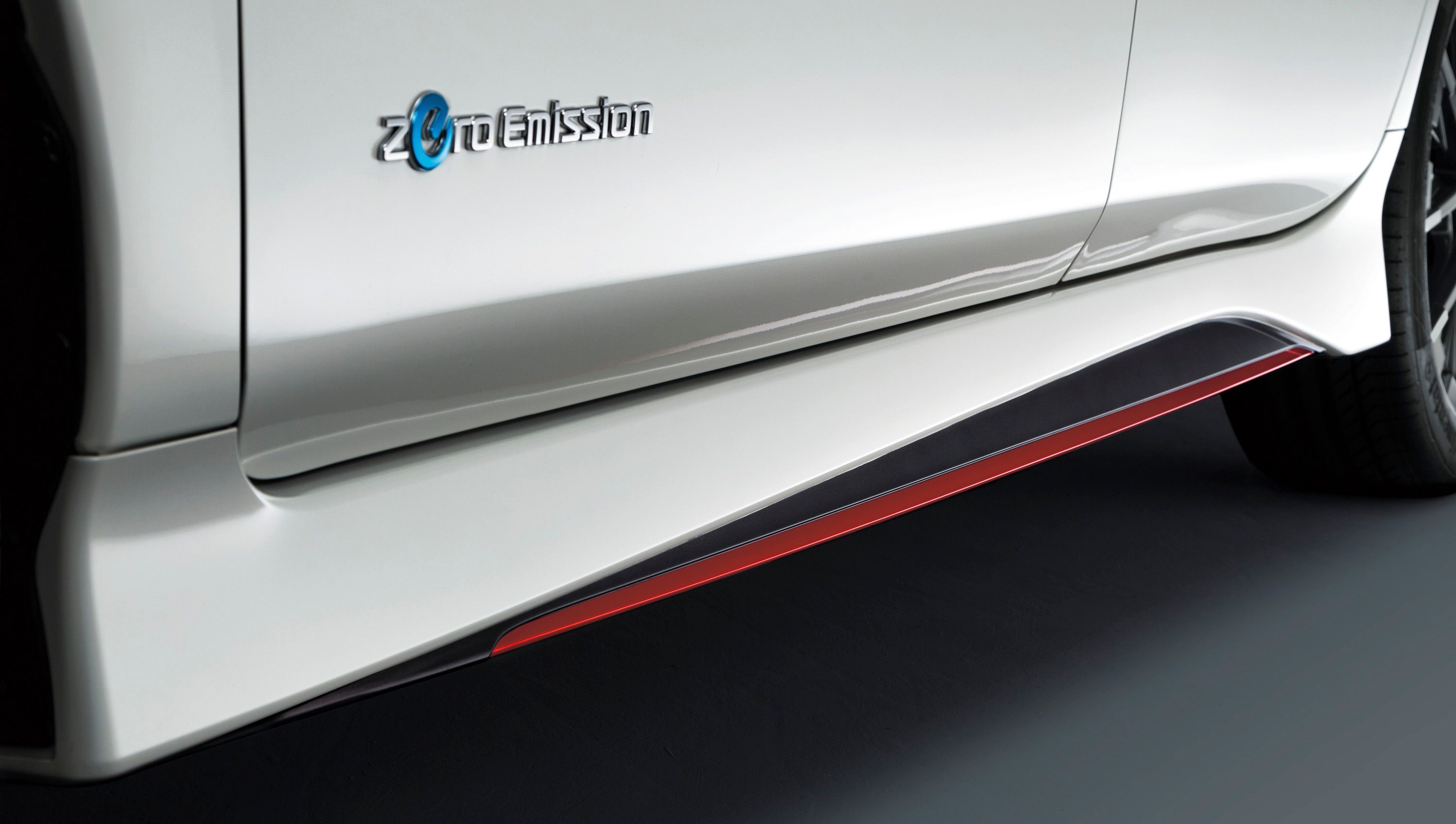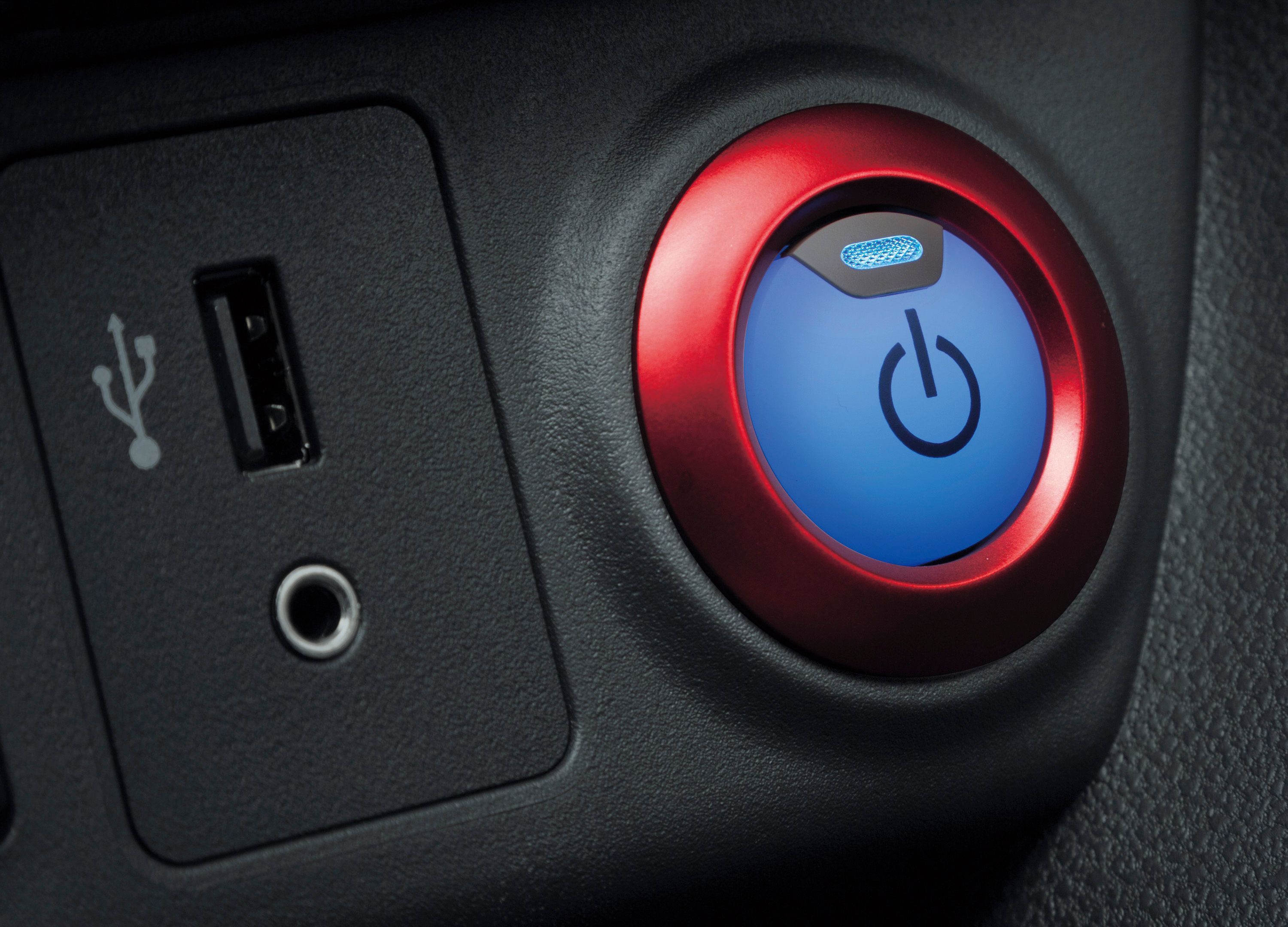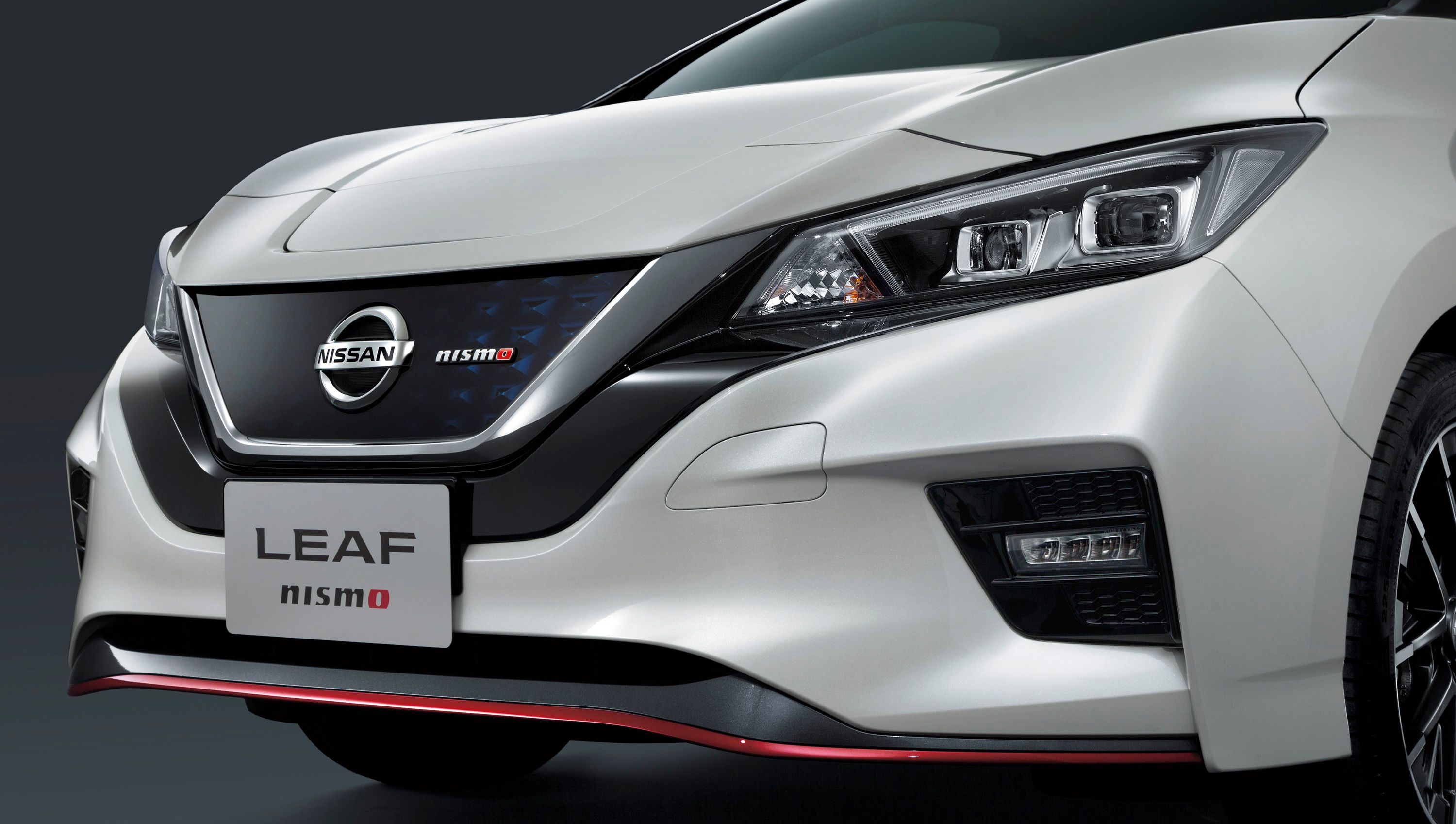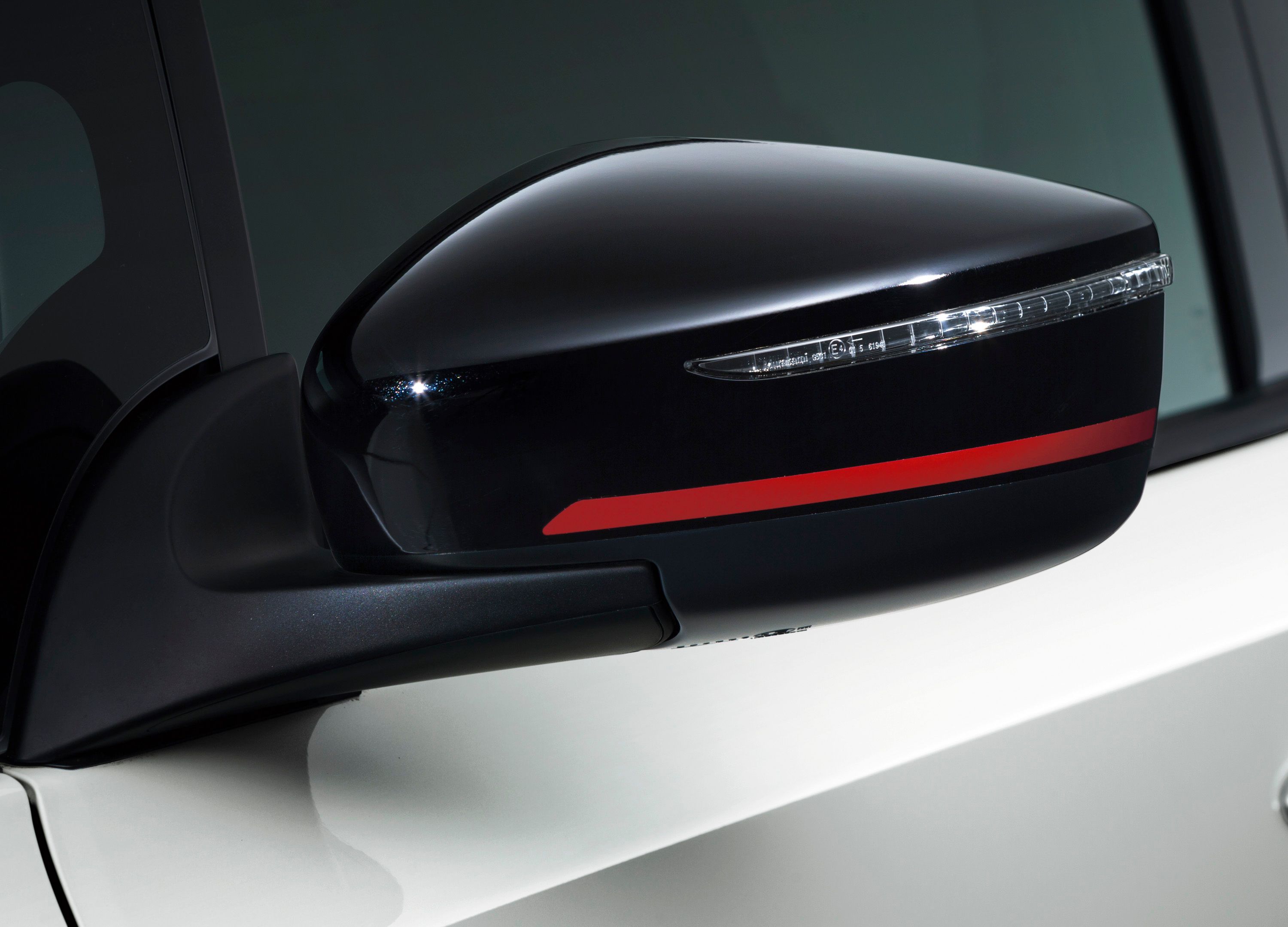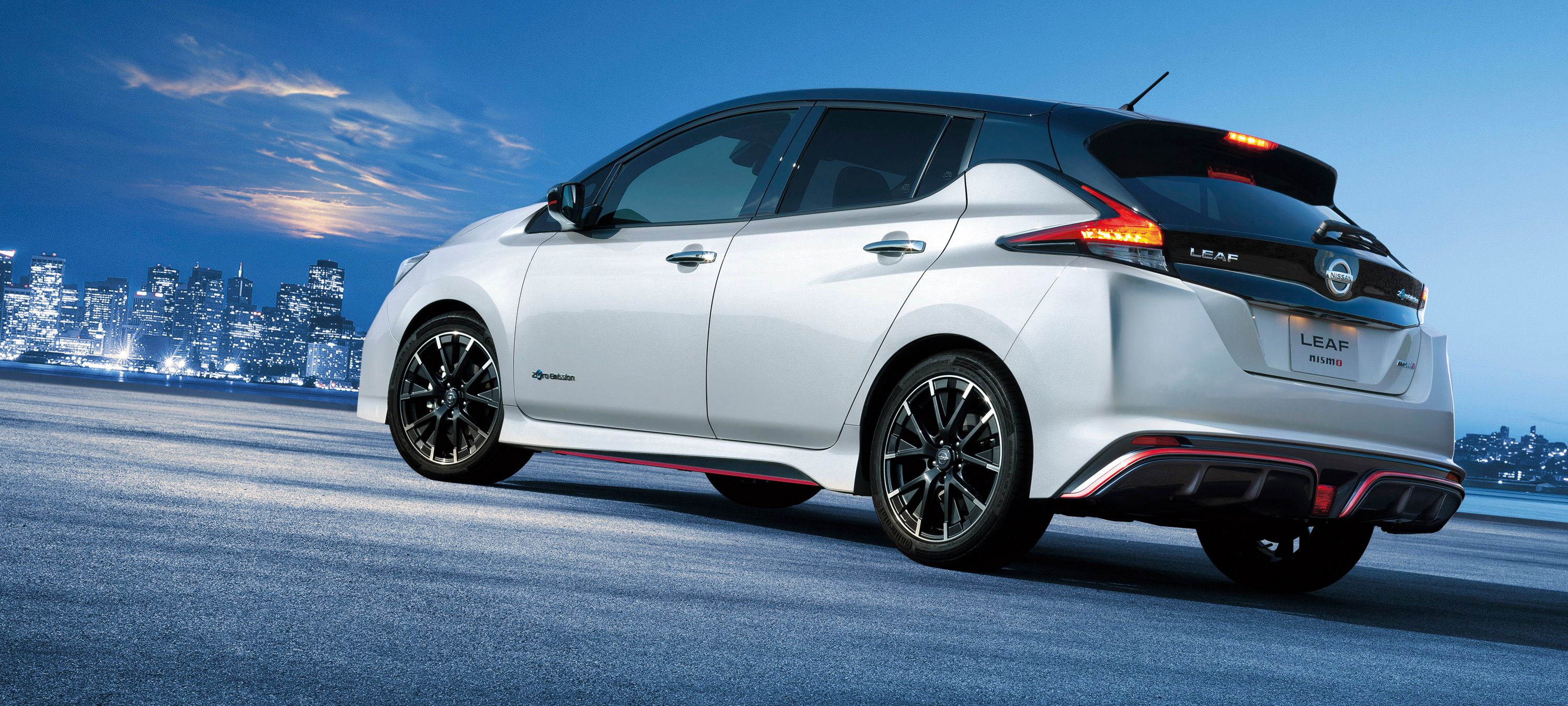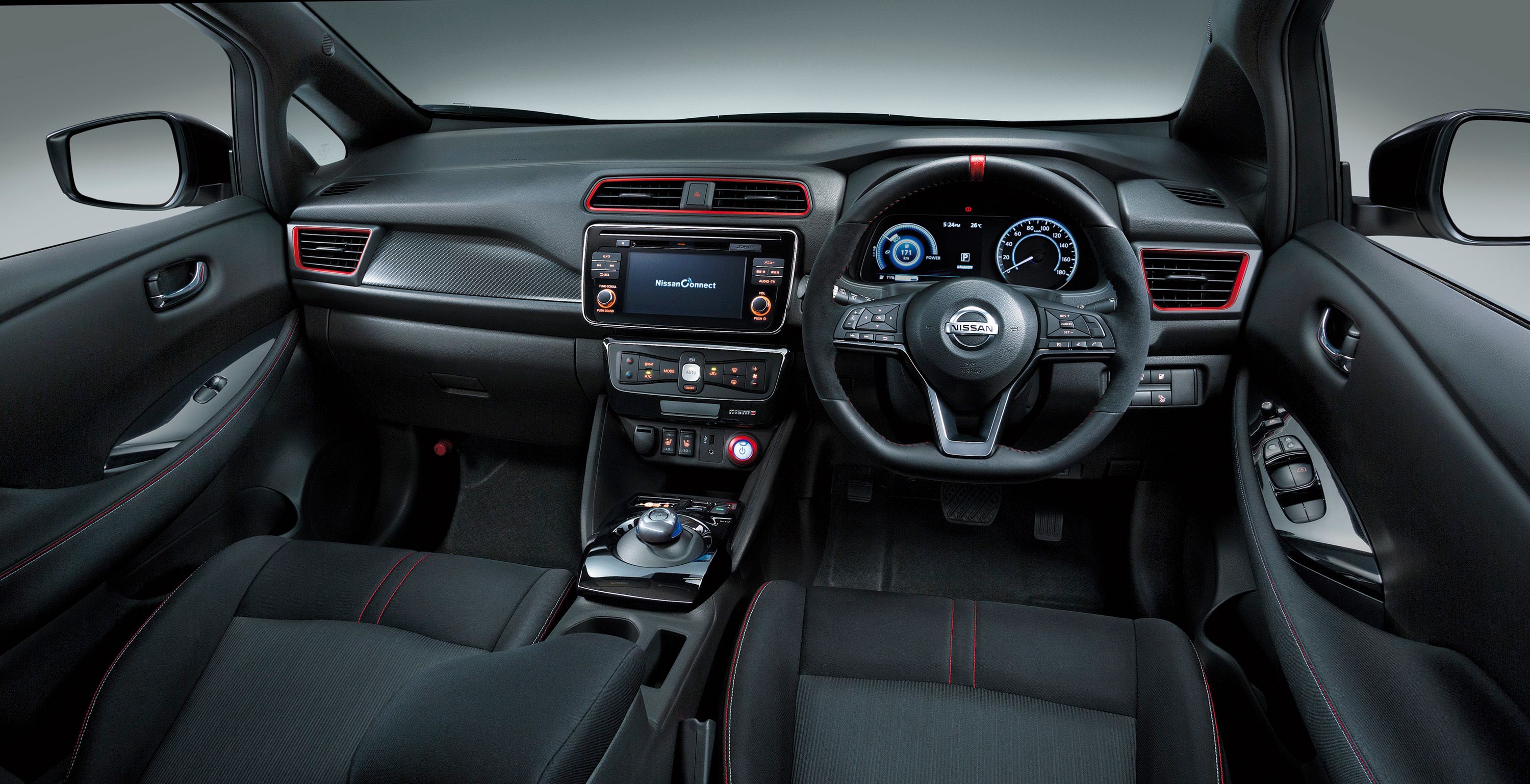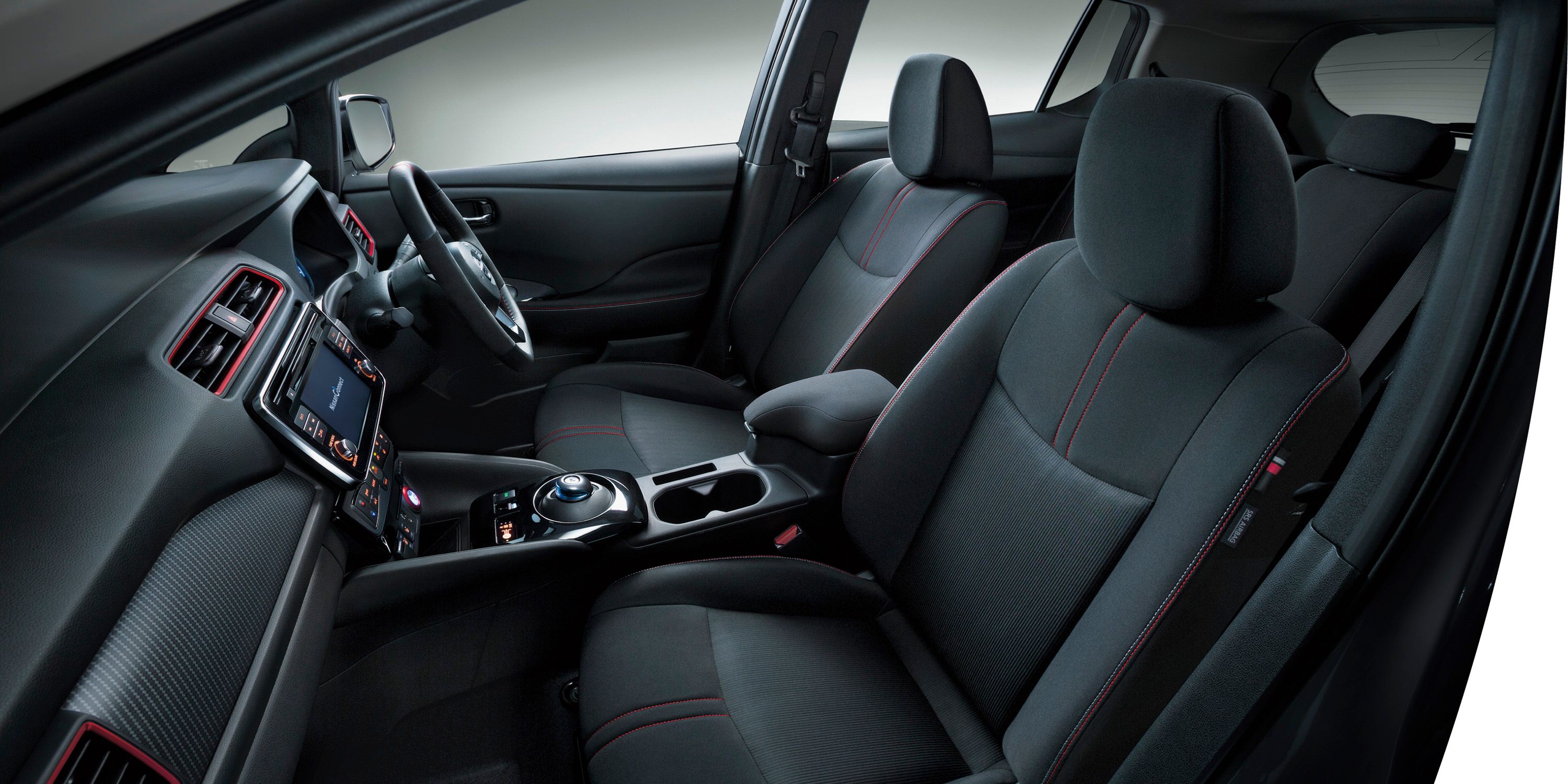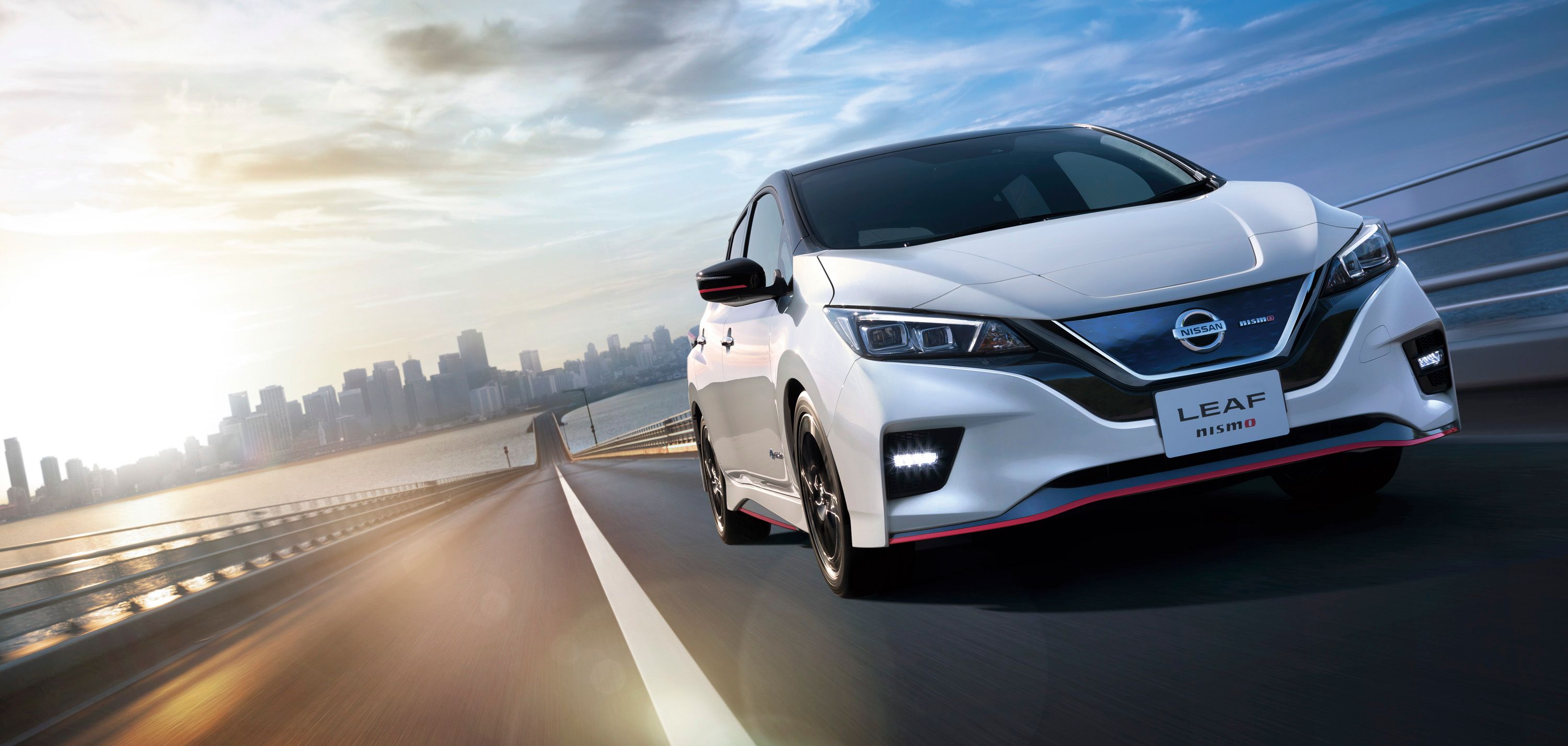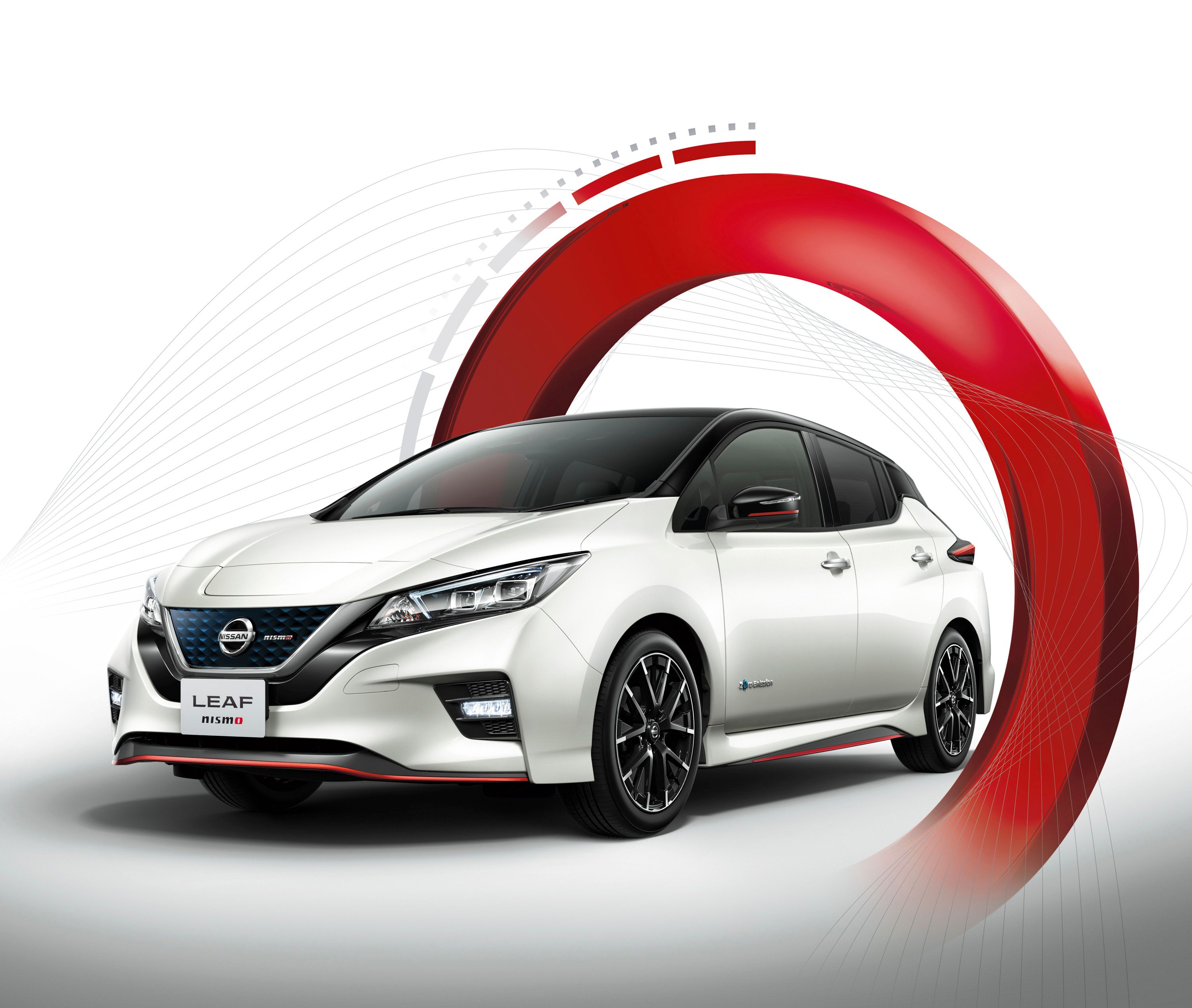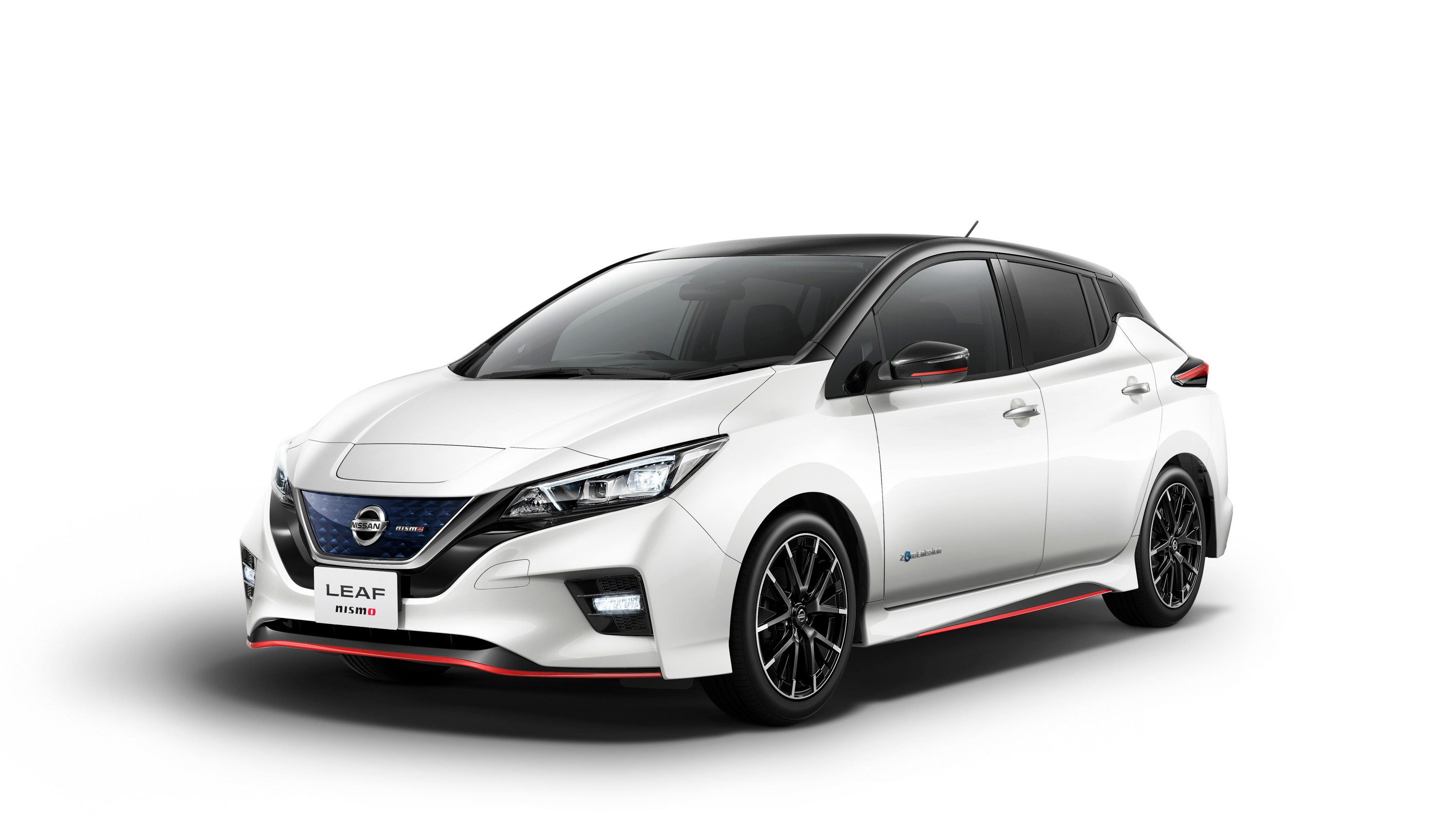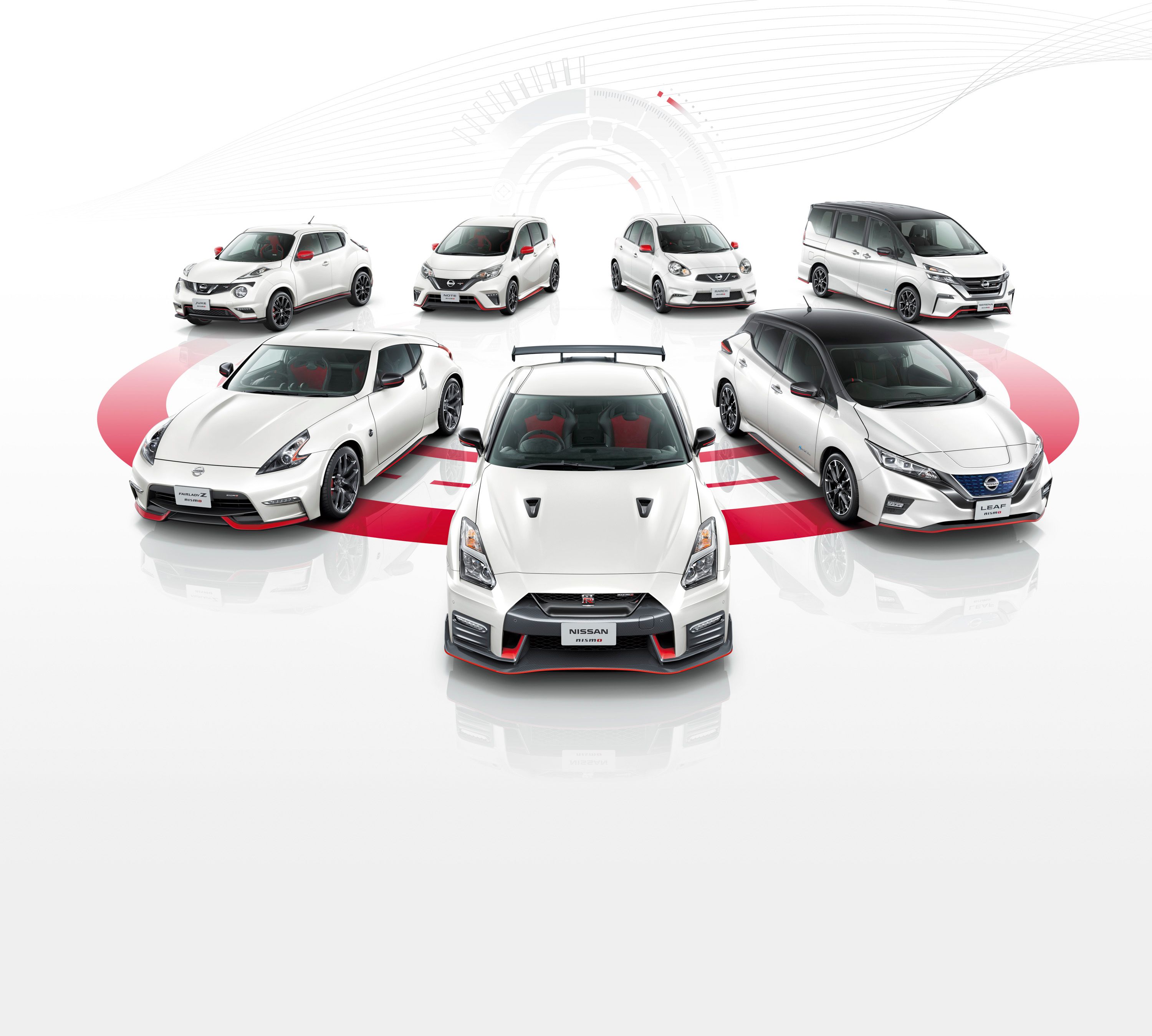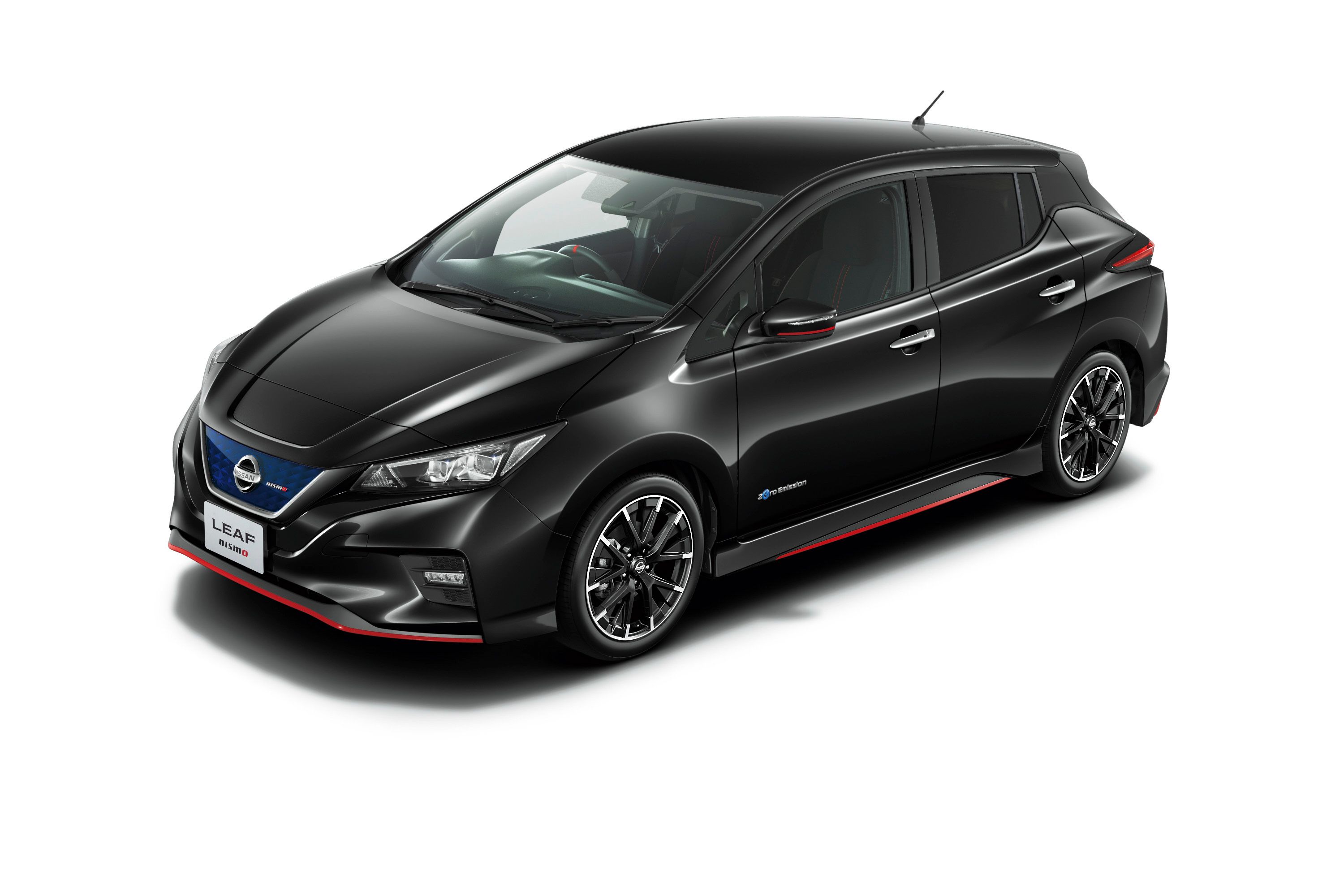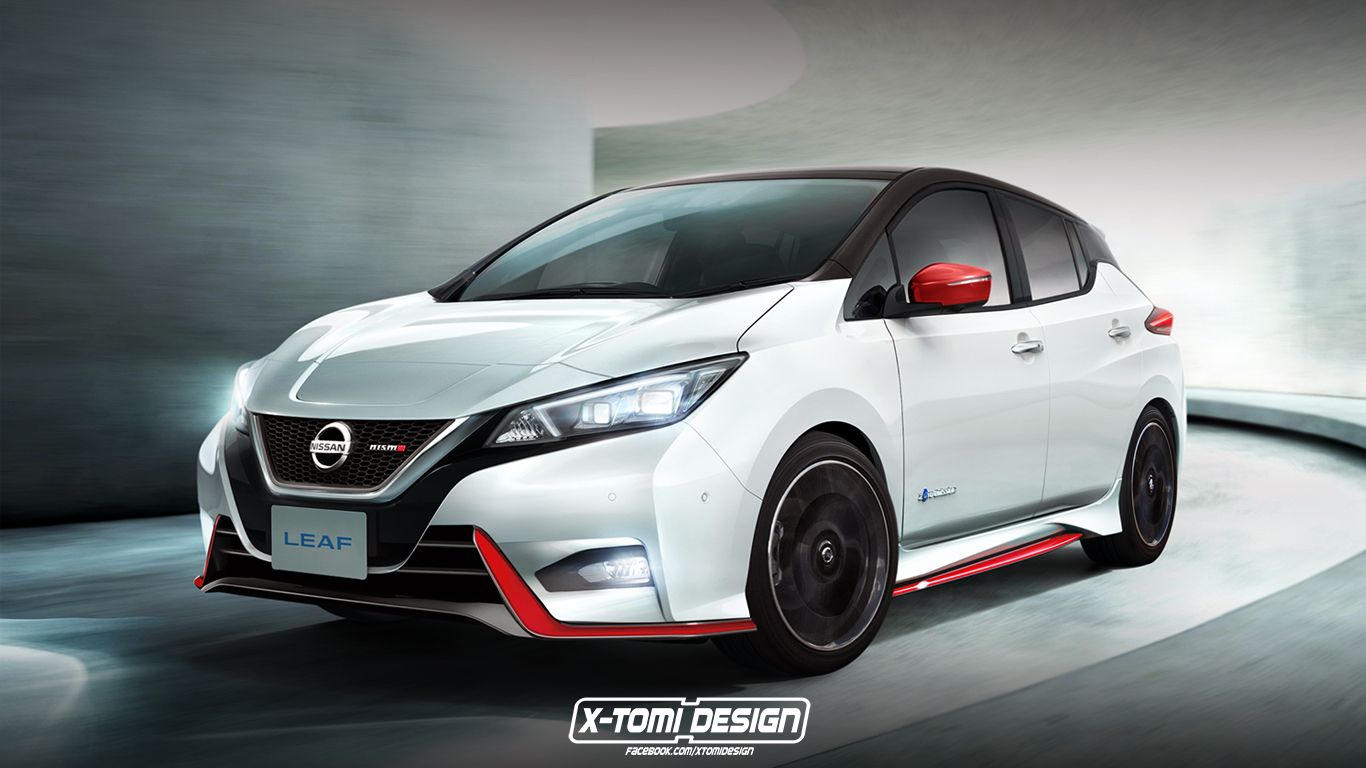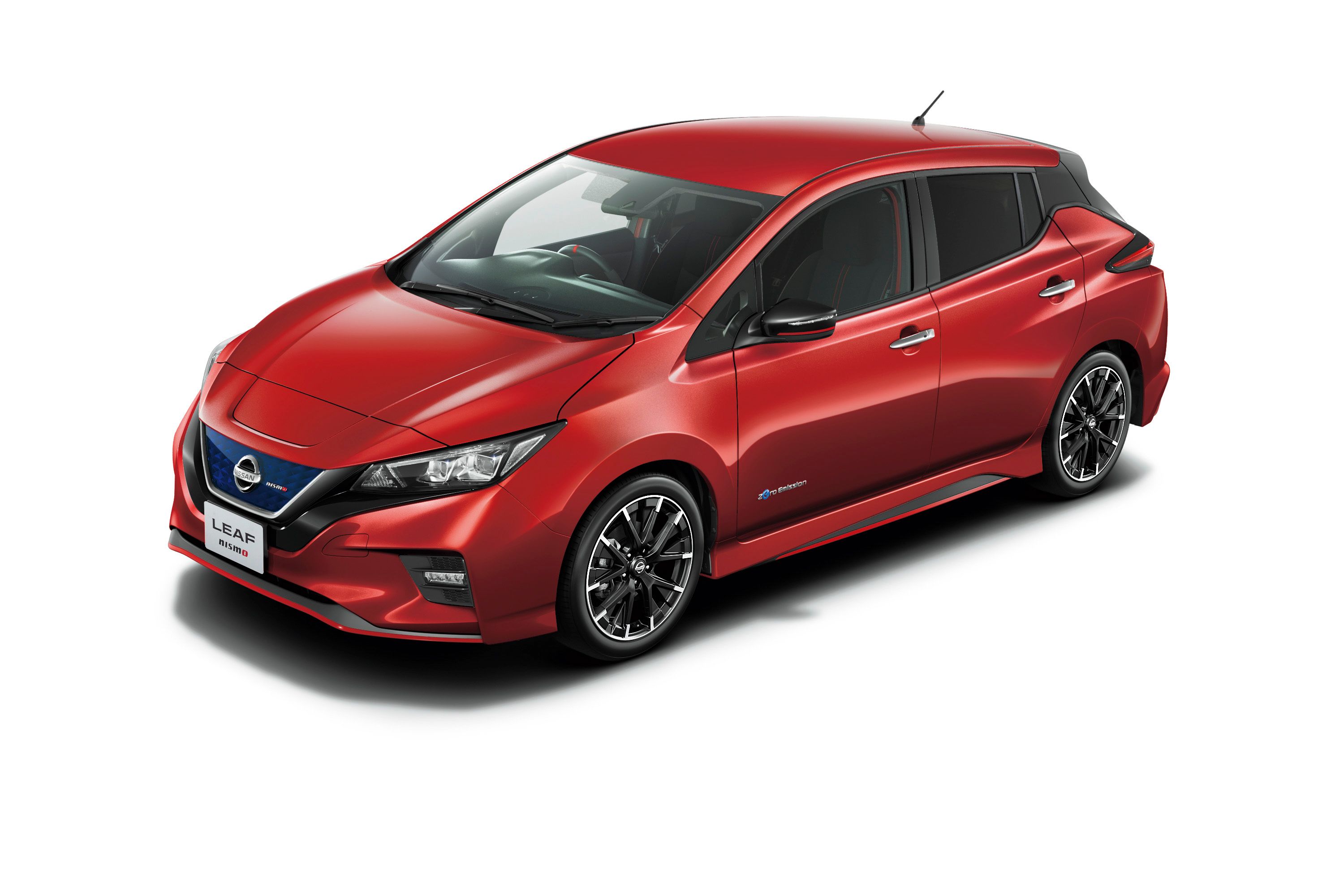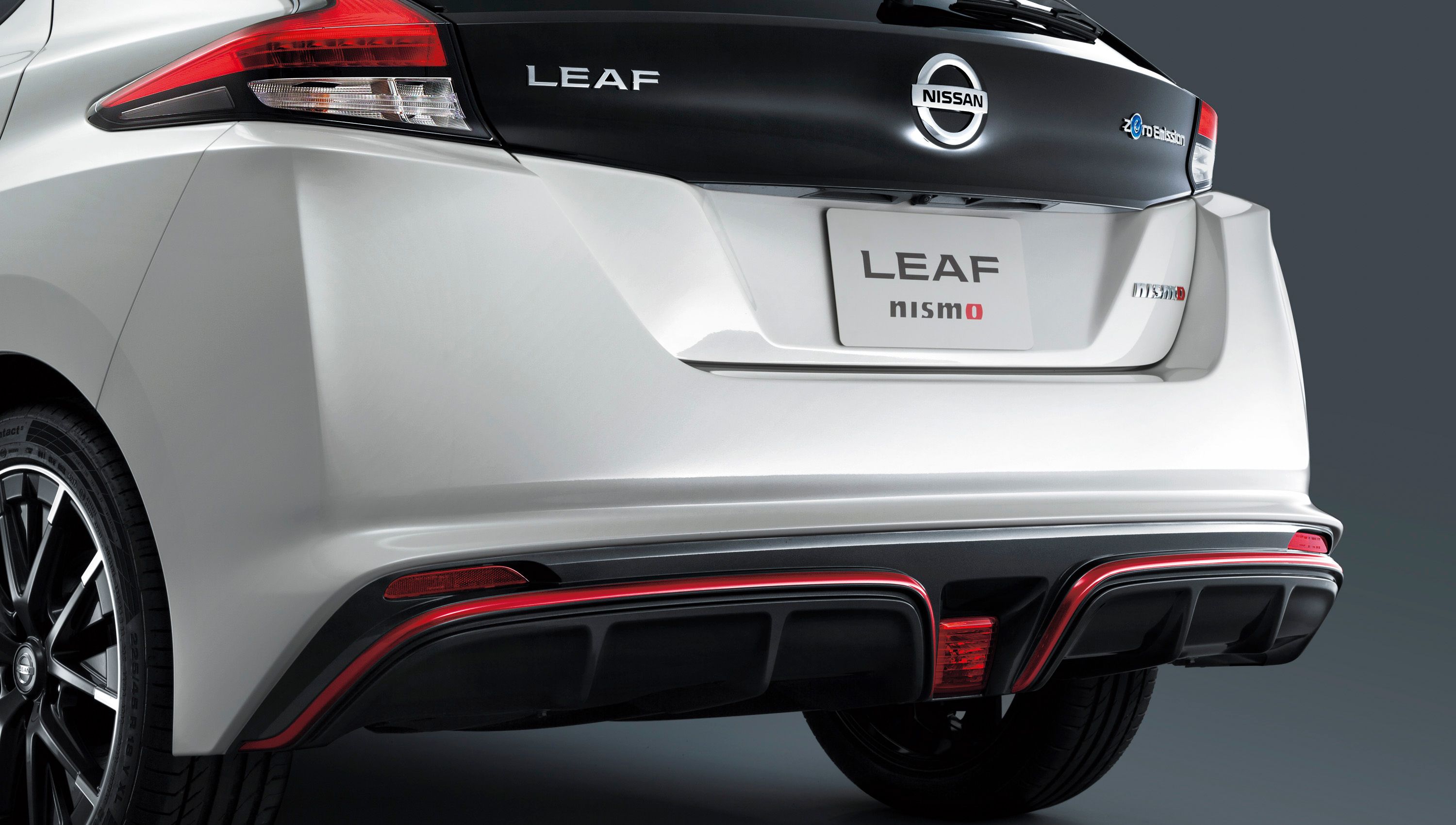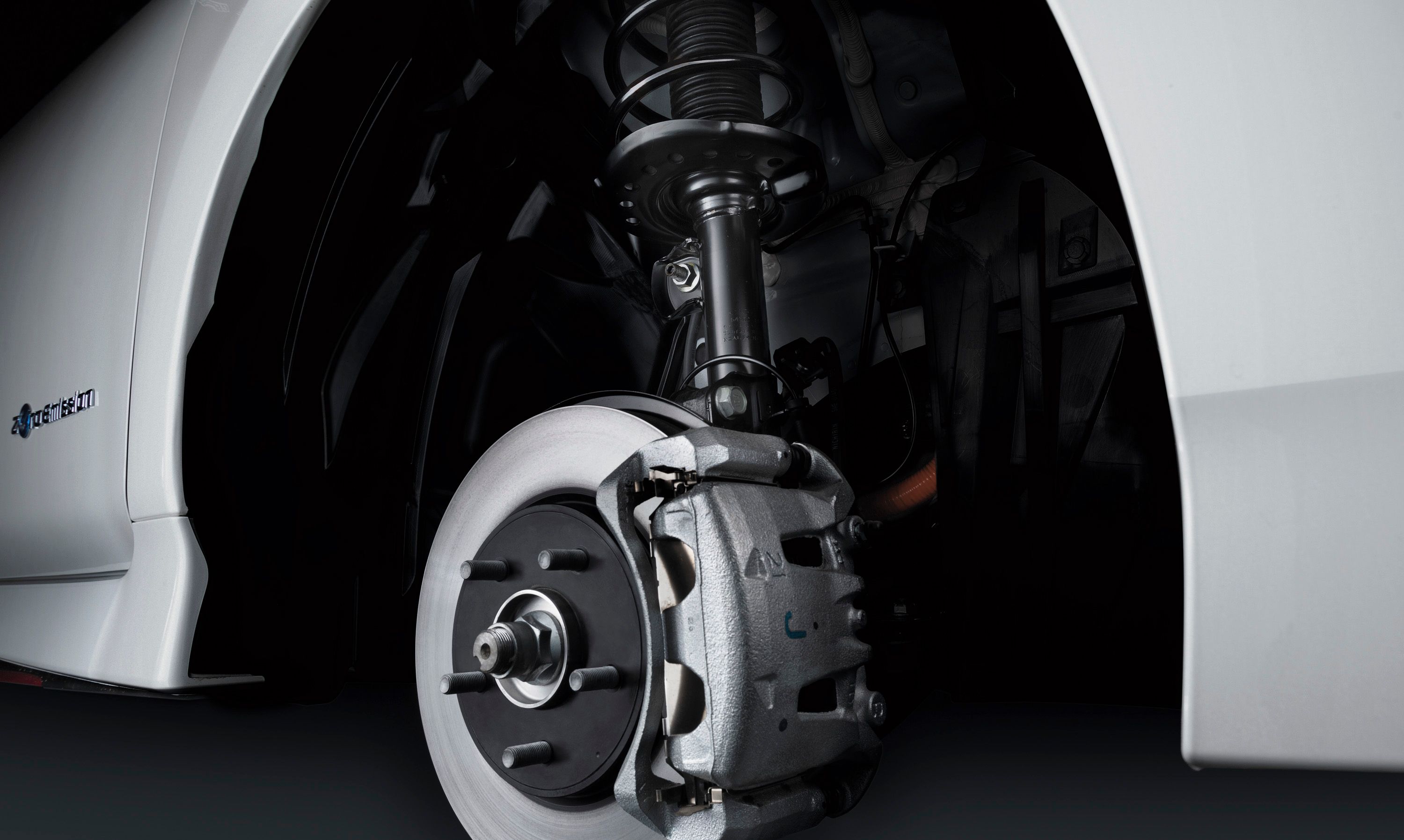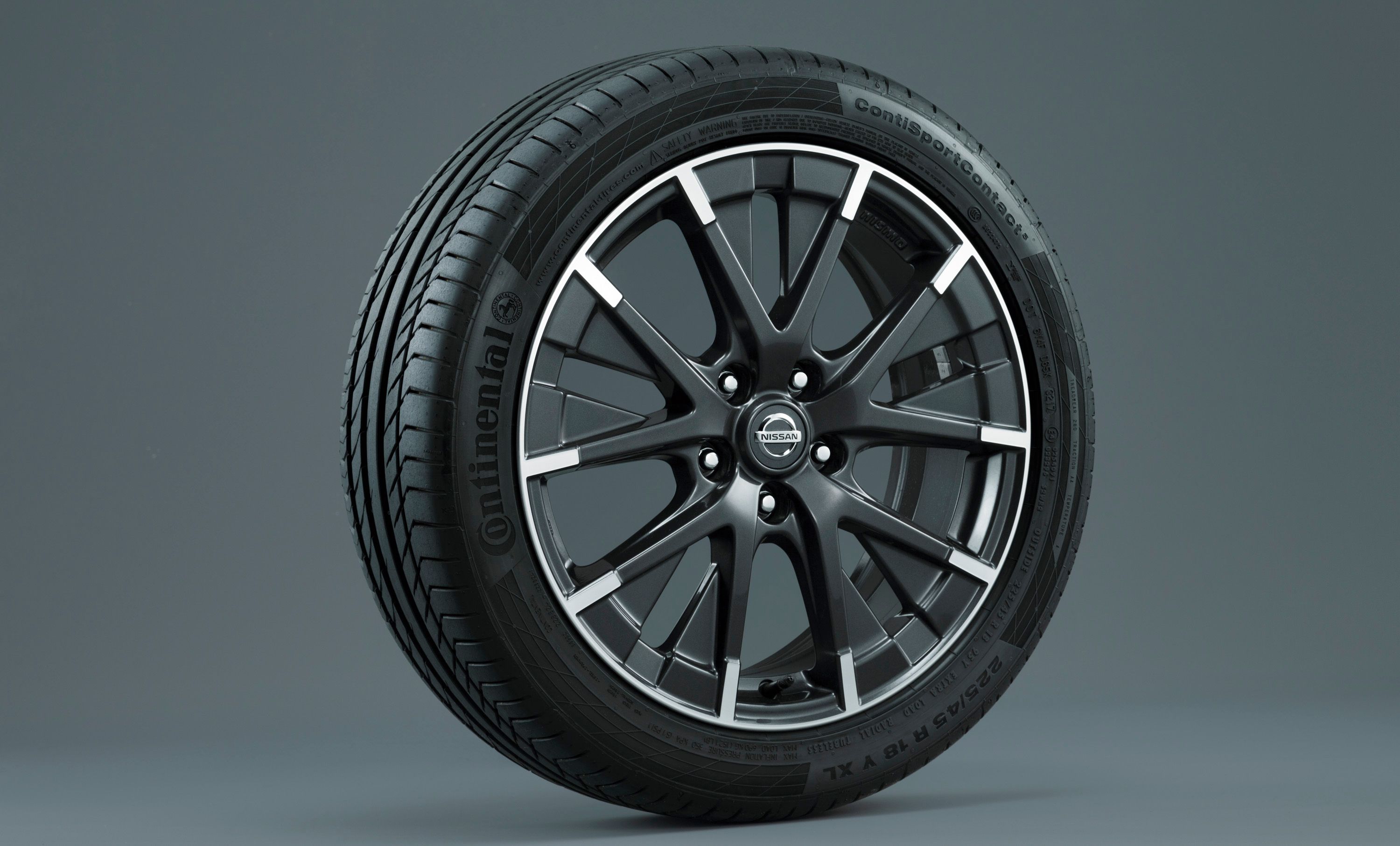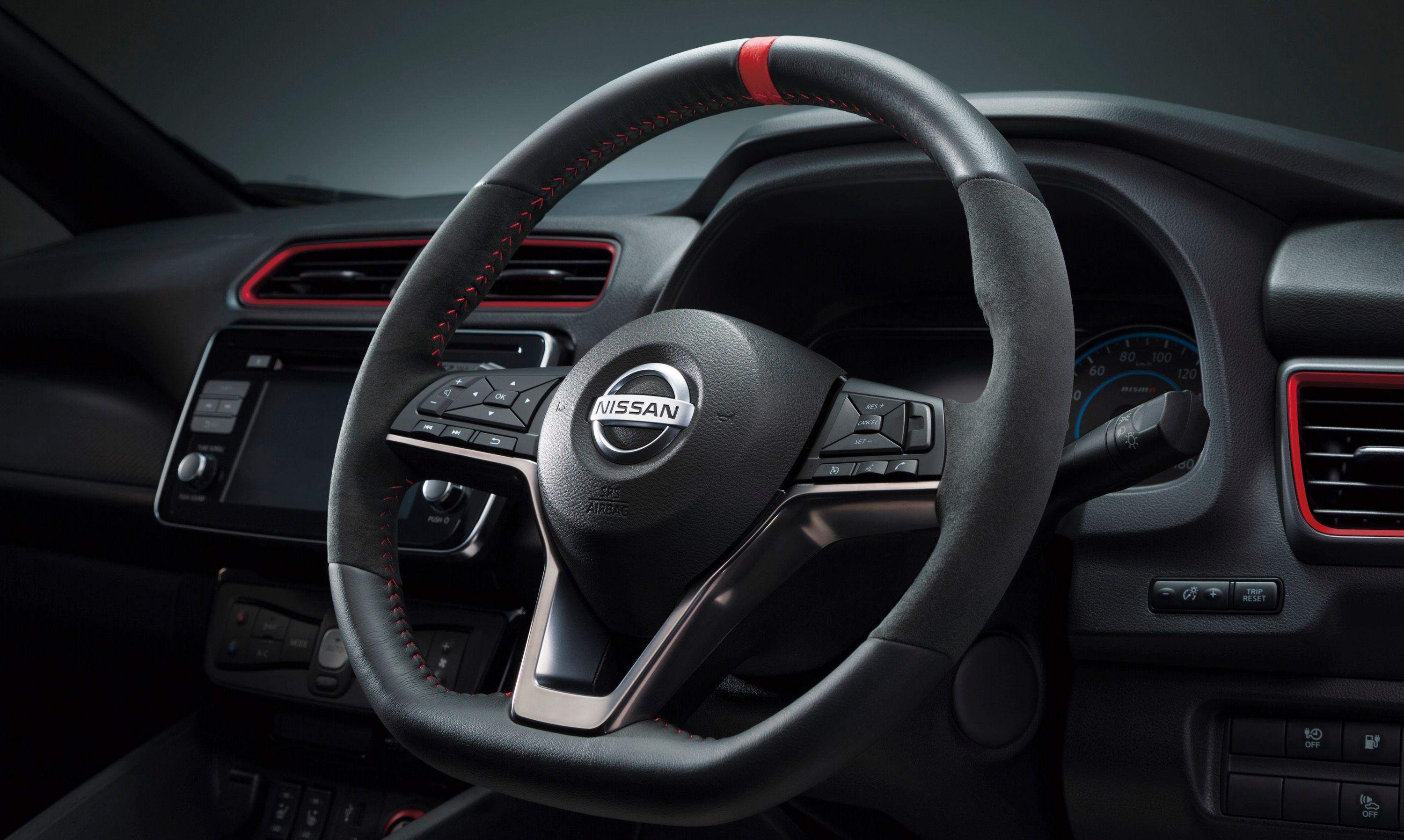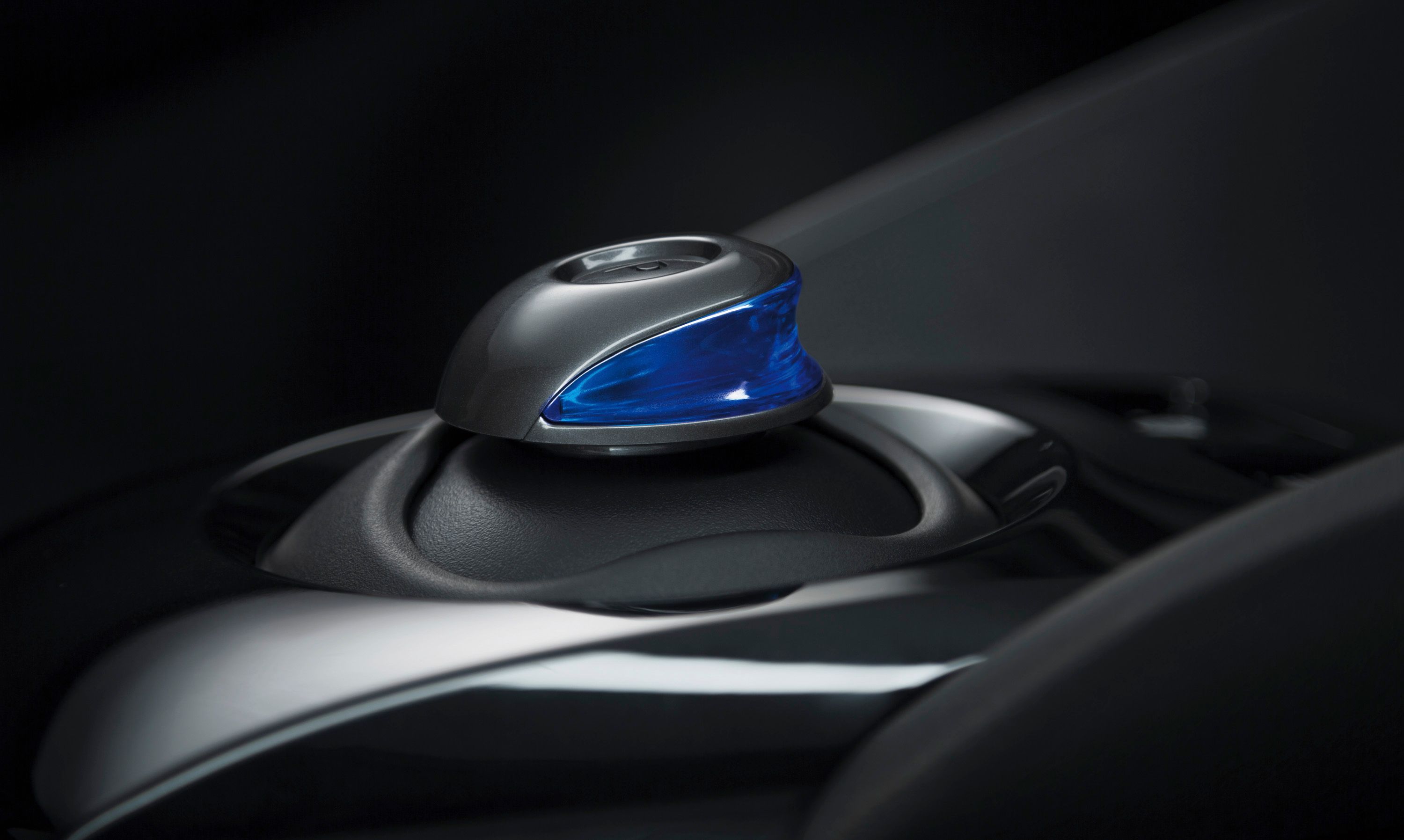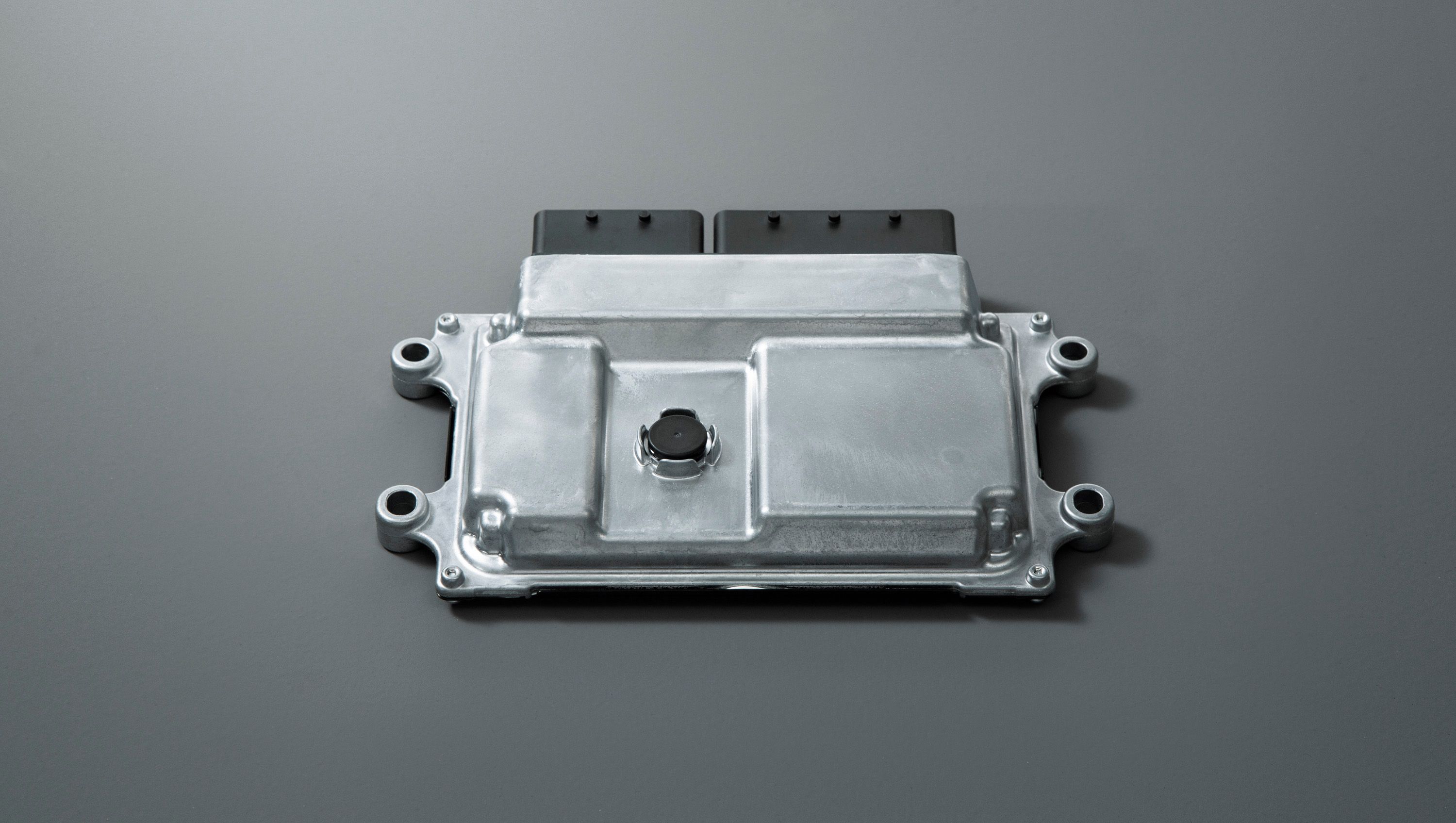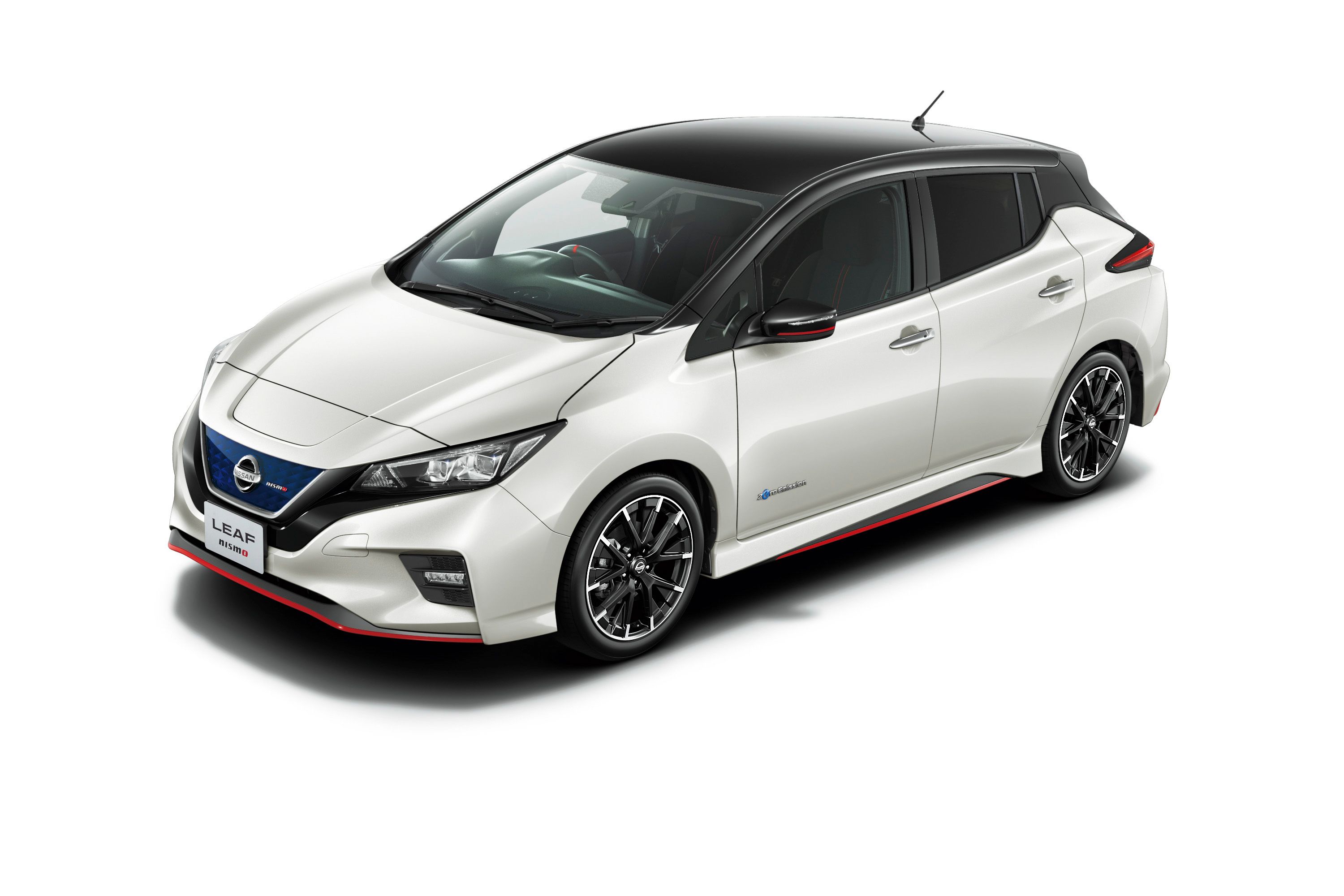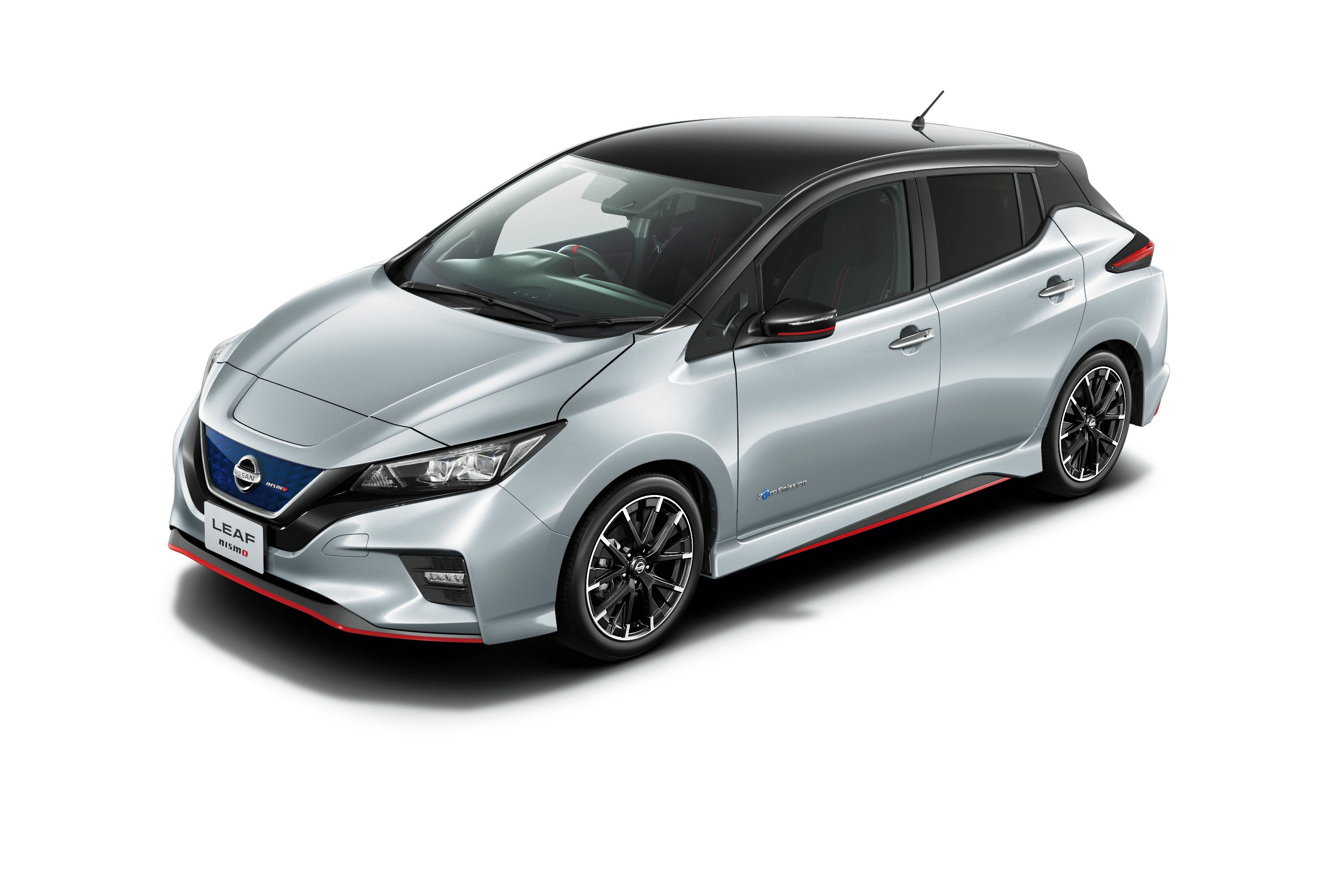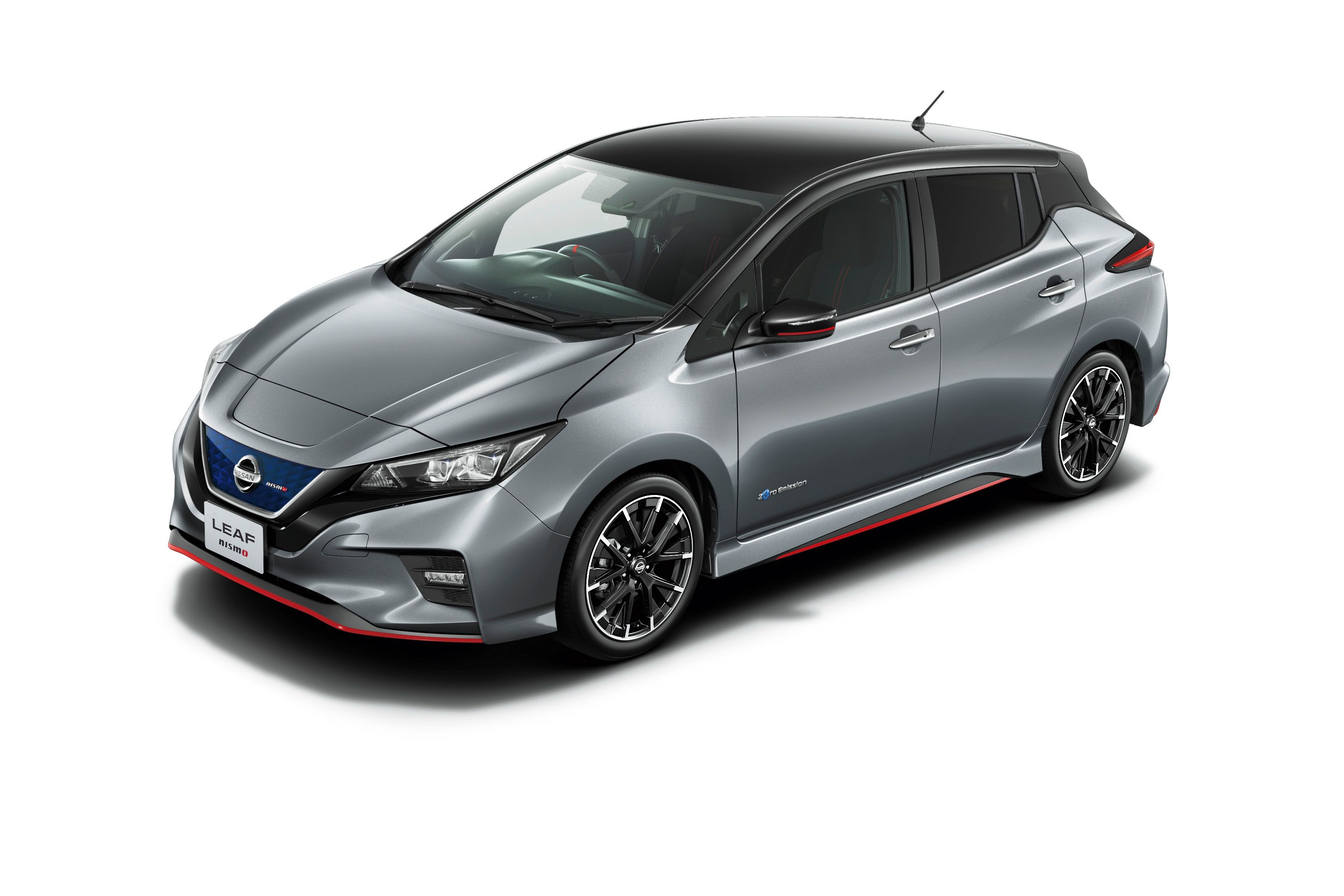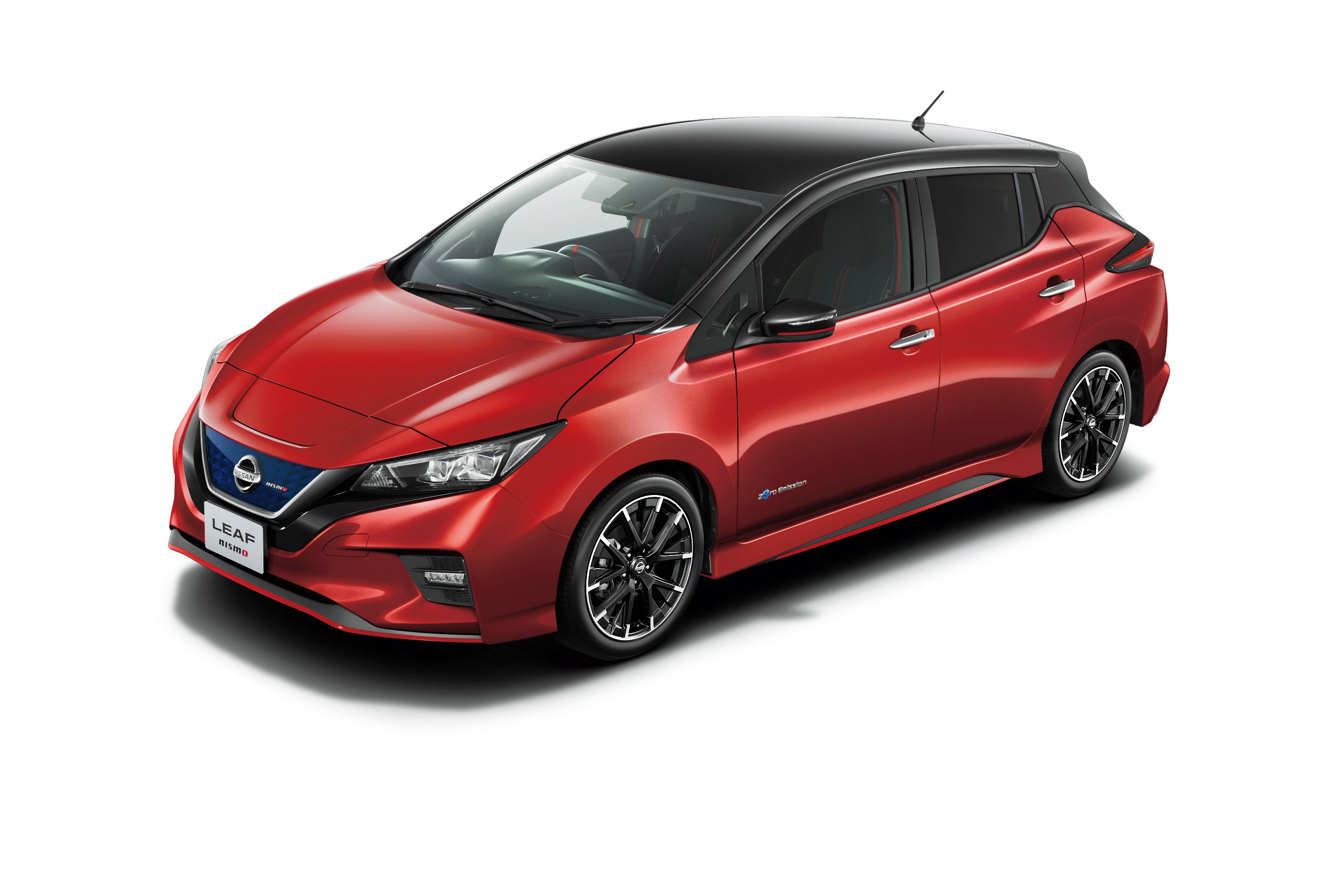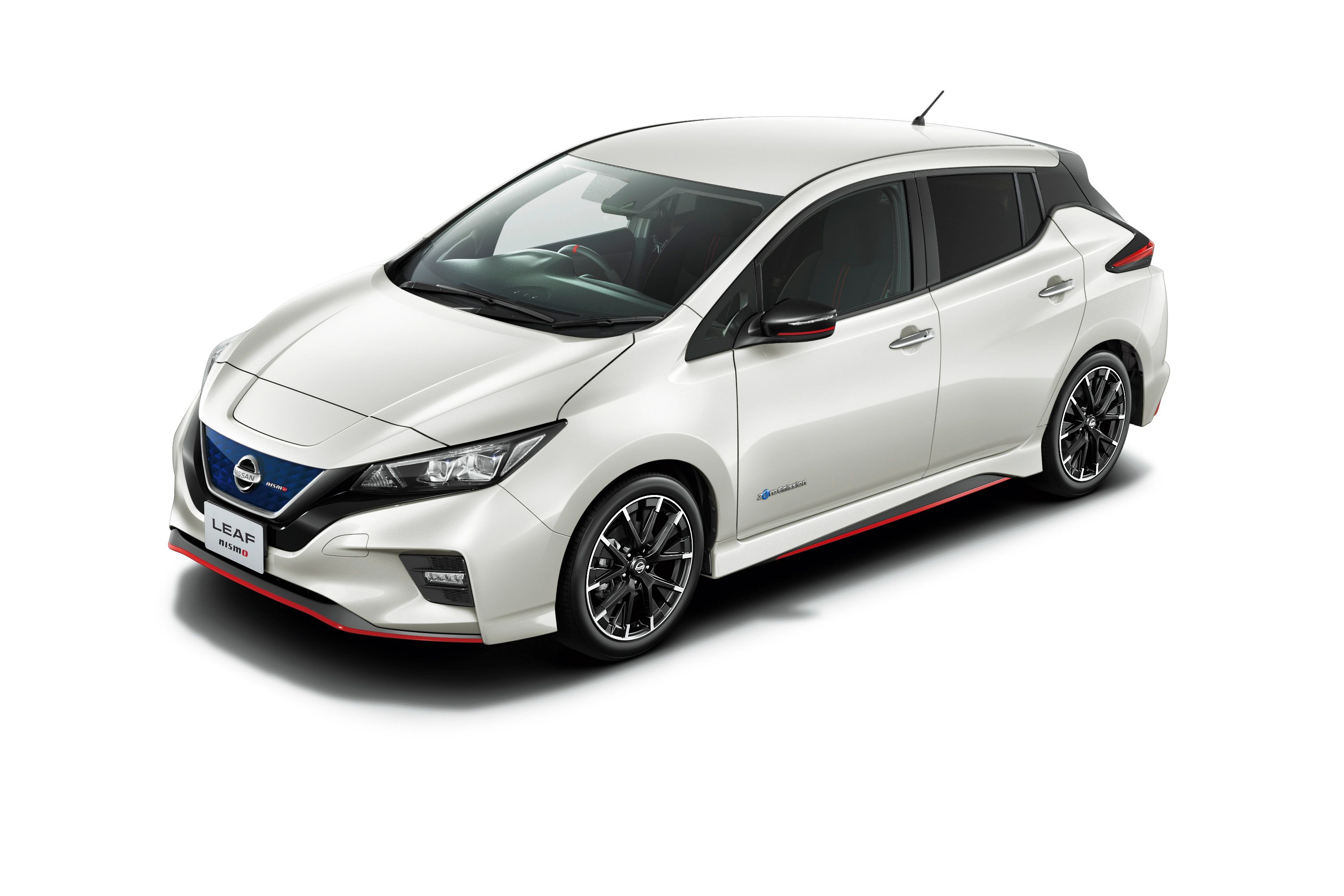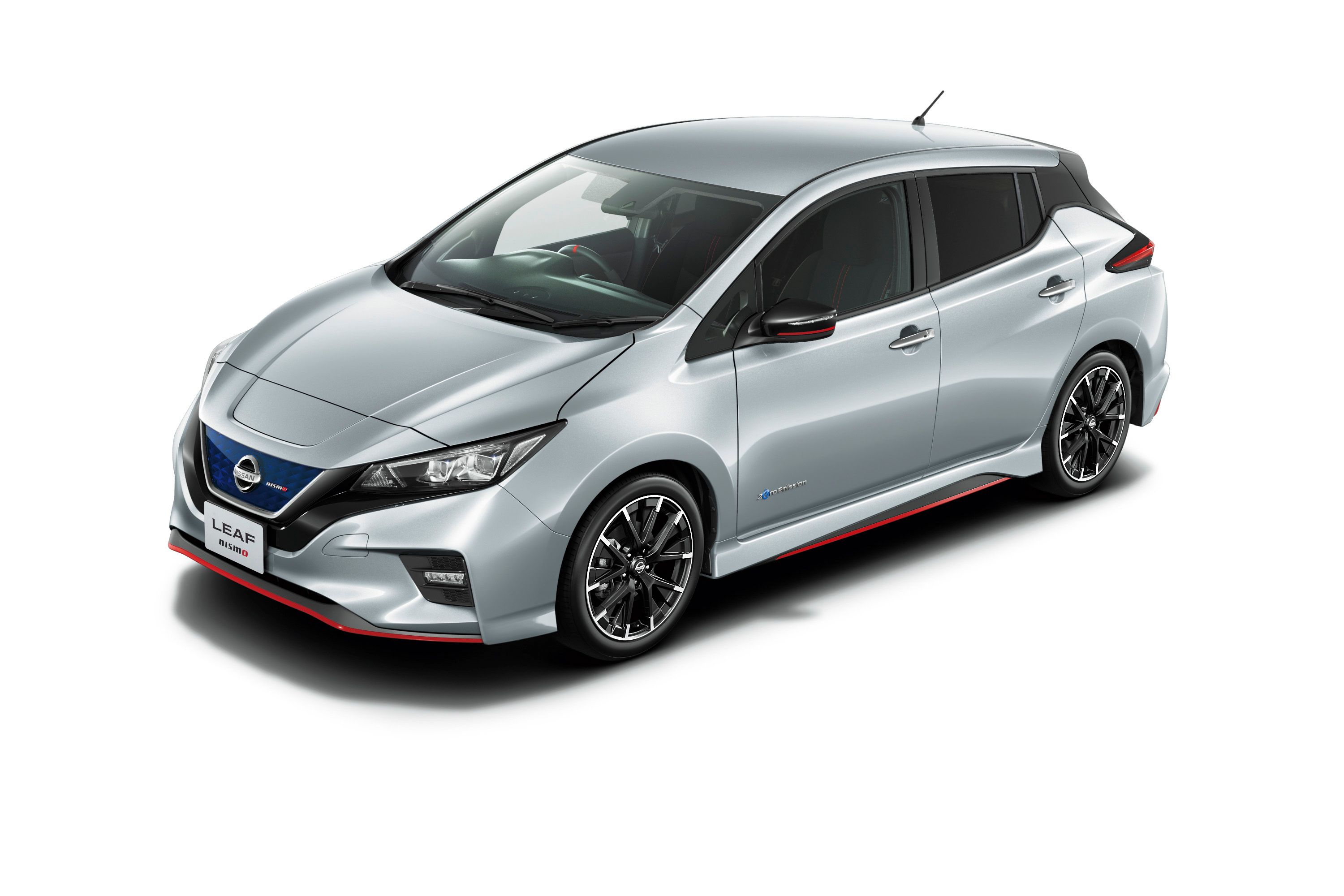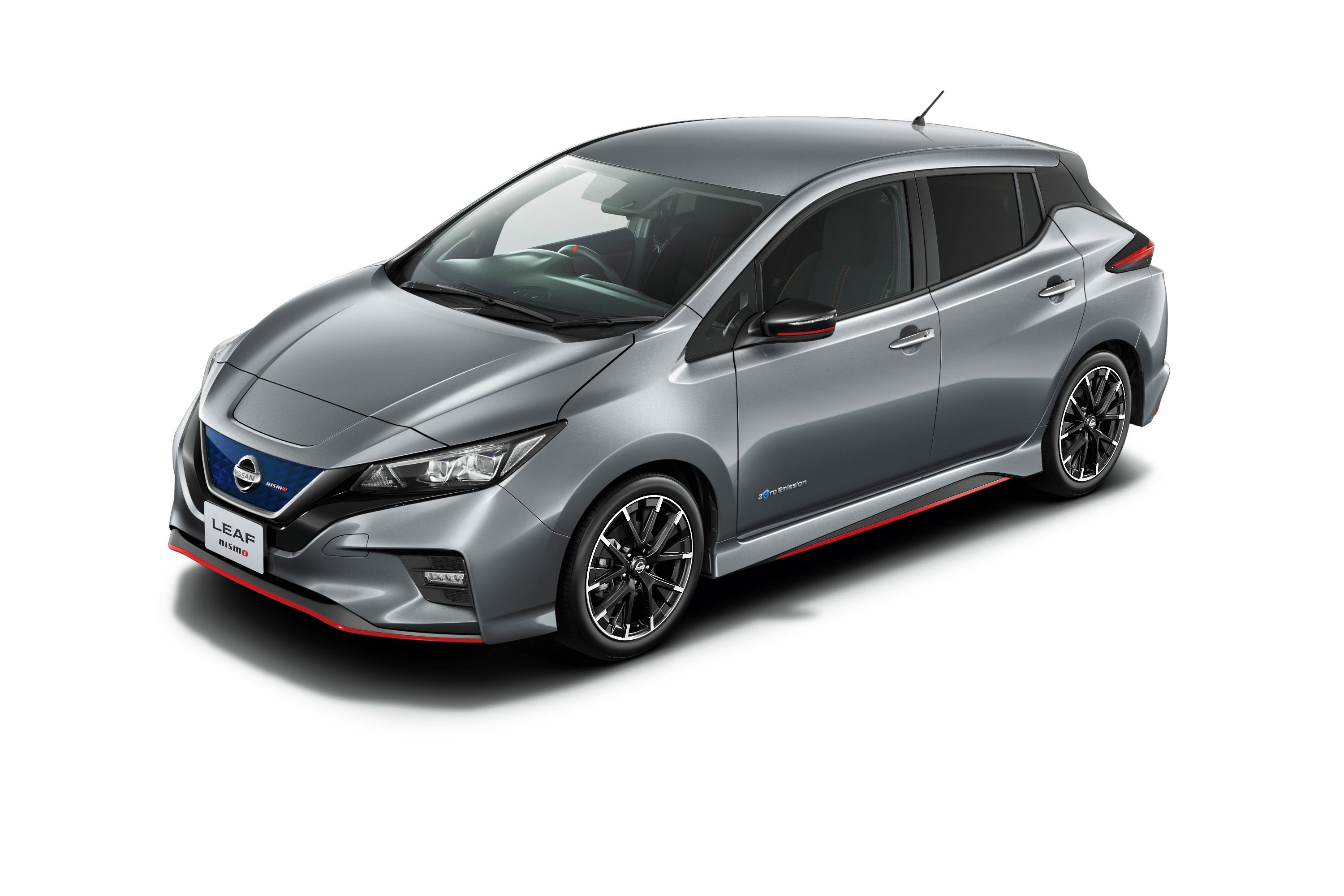Introduced in 2010, the Nissan Leaf set many benchmarks in the electric car market and has become one of the most popular EVs out there. But, after seven years on the market, the Leaf got a bit long in the tooth, and with other companies having introduced more modern EVs in this niche, Nissan had no choice but to develop a second-generation model. Unveiled for the 2018 model year, the new Leaf is better in just about any department and it finally spawned a Nismo version.
Previewed by a concept unveiled at the 2017 Tokyo Motor Show, the Leaf Nismo is heavily based on the show car. However, the Nismo isn't the "higher power, longer range version at a higher price" promised by Nissan, as the upgrade is far from comprehensive under the skin. The EV was also launched in Japan only, and it doesn't seem as if Nissan wants to sell it in Europe or the United States anytime soon. Information is still scarce, but until more data becomes available let's have a closer look at what we already know about it.
Continue reading to learn more about the Nissan Leaf Nismo.
2019 Nissan Leaf Nismo
- Make: Array
- Model: 2019 Nissan Leaf Nismo
- Horsepower: 147
- Torque: 236
- [do not use] Vehicle Model: Array
Previous Leaf Nismo Creations
Although it has yet to launch a production Leaf Nismo as of 2017, Nissan has been toying with the idea since the first-generation Leaf arrived back in 2010. The first Nismo concept based on the Leaf, the Nismo RC, was actually a very radical interpretation. Showcased at the 2011 New York Auto Show, it had a race-inspired aerodynamic kit and a full carbon-fiber monocoque body which made it about 40-percent lighter than the standard model. The Nismo RC was designed to run for around 20 minutes under full racing conditions and testing revealed a 0-to-62 mph sprint of 6.8 seconds and a top speed of 93 mph. The drivetrain was identical to the production Leaf. Nissan reportedly built eight units, but none was sold to customers.
A second Nismo concept was launched at the 2011 Tokyo Motor Show, this time around in a more production-friendly format. Although not as aggressive as the Nismo RC, this concept has a revised aerodynamic kit inspired by the race car, new alloy wheels, and bespoke features inside the cabin. The drivetrain, on the other hand, was again identical to the standard Leaf's. In early 2013, Nissan announced that the Leaf Nismo will be produced in small numbers for the Japanese market, but no production model was launched so far.
Nissan Leaf Nismo Exterior
Not surprisingly, the production model is very similar to the concept car. Nissan did change a few features that seemed overly aggressive, but we can see plenty of Nismo trademark cues.
Up front, three changes set the two cars apart. As expected, the closed-off grille was moved into production, but the surrounding trim was altered to include brighter chrome trim. Down below, the splitter is a bit less aggressive, while the small gap above is narrower. The center of the hood is no longer painted black, but finished in the same color as the body.
Onto the sides, the production model once again looks very similar to the concept and includes more aggressive side skirts with red detailing and matching mirror caps. A set of new, larger wheels with "Nismo" lettering was added. Somewhat surprisingly, the concept's two-tone design carried over as well. A slightly lower ride add extra sportiness, as does the black roof, yet another feature taken from the concept car.
Around back, the production model is virtually identical to the concept. Nismo upgrades includes a revised roof spoiler in black to match the C-pillars, and a diffuser-like element with red accents and a Formula-One-style brake light in the middle.
Nissan argues that all these Nismo-crafted bits increase downforce without adding drag, but there are no figures to back this claim yet. Nine exterior colors will be offered, including the Nismo-exclusive Brilliant Silver / Super Black and Dark Metal Grey / Super Black two-tone designs.
Interior
It took me a few seconds to realize that these interior photos aren't taken from the concept car. Everything appears to be identical, save for the missing red accents around the vents placed at the top of the dash, which are missing on the production model. Everything else was carried over from the concept, which isn't bad, as it sets the Nismo model apart from the regular Leaf.
The first thing that catches the eye is the flat-bottom steering wheel, which is also wrapped in leather and has Alcantara grip areas. There's also a red mark at the 12 o'clock position, just like in full-fledged race cars.
Both the A/C vents at the corners and on the center stack have red surrounds, as does the "Start" button above the center console. The seats are also taken from the concept, which is a big upgrade since they offer more lateral support. Sure, it's not like the Leaf is incredibly fast, but you at least get the extra comfort.
Unfortunately, the seats are wrapped in cloth only, so don't expect anything premium in this department. The red and grey stitching on the sides is pretty cool though. The same stitching can be seen on the armrests of the door panels. Other extras include a new shifter in gun metal chrome finish, a similar design for the instrument cluster surround, and a carbon-like look for the dashboard. The hatchback also features Nismo emblems and unique startup displays for the infotainment screen and the instrument cluster.
Drivetrain
Here's where thing were a little unclear, as Nissan had nothing to say about the concept car's drivetrain. Unfortunately, it turns out that the Japanese firm didn't do much to upgrade the Leaf's drivetrain for the Nismo model, so the hatchback uses the same 40-kWh battery and electric motor as the standard model. The output rating is also identical at 147 horsepower and 236 pound-feet, which is a bit disappointing to be honest.
On the other hand, this isn't the first Nismo model that's a Nismo just on the outside. Nissan has done the same with other models in the past, especially in Japan, so it's not exactly shocking.
The range didn't change either, with the Leaf Nismo able to drive for up to 150 miles on a single charge. That's not bad, but it's still below what you get with EV's like the Chevrolet Bolt or the Tesla Model 3.
Nismo did make a few modifications, but only to the drivetrains software. The powertrain delivers more responsive acceleration, but there's no word if it's actually quicker than the standard model. Nismo also tweaked the car's electronic power steering and suspension and added grippier tires to improve handling.
Interestingly enough, Nissan apparently refused to use one of its newer drivetrains for this model. Earlier this week, the company's director of EV marketing revealed that a longer range Leaf will be coming in 2019 with a more powerful drivetrain. This model will be called the E-Plus and will have a bigger battery, likely to carry a 60-kWh capacity, that will deliver 200 horsepower and return more than 200 miles per charge.
This drivetrain would have been perfect for the Nismo model and it's yet unclear why Nissan didn't wait for this new setup to enter production. On the other hand, Nissan could offer the Nismo package on the E-Plus model too, which means that it could remain just a visual thing and not a high-performance option. Or maybe this E-Plus version will be sold as the Nismo in Europe and North America, but we won't find out more until later this year.
Prices
As with all Nismo products, it's safe to assume that the upcoming Leaf Nismo will cost more than the standard model. The second-gen Leaf retails from $29,990 in base guise, while the range-topping Leaf SL costs $36,200 before options. The Leaf Nismo will probably cost a bit more than the SL, so expect it to fetch close to $40,000. However, with incentives and all, pricing should drop below the $35,000 mark.
Of course, with the Nismo model sold in Japan only for the time being, all this talk about prices is useless. We don't know when and if this version will come to the United States.
Competition
Chevrolet Bolt
Chevrolet isn't planning on doing a higher performance version of the Bolt anytime soon -- although a Bolt RS would be a good idea -- but the American EV is already more powerful than the Leaf and would be on par with a souped-up Leaf Nismo. Launched for the 2017 model year, the Bolt is Chevy’s first mass-produced EV and aimed at the already popular Leaf. It's about as big as the Leaf and boasts a premium feel on the inside, as well as a comprehensive tech package. You get Bluetooth connectivity, personalized settings, MyChevrolet App, 4G LTE Wi-Fi hotspot, Apple CarPlay, and Android Auto, among other modern apps and features. Additionally, the Bolt is the better machine when it comes to performance, as the electric drivetrain cranks out a solid 200 horsepower and 266 pound-feet of torque. The range is estimated at up to 238 miles on paper and up to 210 miles in everyday driving conditions, so you get far more than in the 150-mile Leaf. Charging takes 9.5 hours, a bit longer than the Leaf, while pricing starts at $37,495 before incentives.
Read our full story on the 2017 Chevrolet Bolt.
Tesla Model 3
Tesla’s latest and most affordable offering, the Model 3 is not yet in production and deliveries won't commence until 2018, but once it arrives, it will be one of the best EVs on the market. While aimed at the Nissan Leaf, as Elon Musk himself pointed out a few years ago, the Model 3 is actually slightly larger, being similar to the BMW 3 Series in size. It's also more of a notchback rather than a classic hatchback. What's more, it should be more powerful and quicker than the Leaf and Bolt, while providing more range than the Japanese EV. The range is estimated at 220 miles for the base model, but opt for the Long Range upgrade, and it goes up to a whopping 310 miles, double what you get with the Leaf. Tesla’s Supercharger network also brings impressive charging time, with 30 minutes being enough for a 130-mile range in the base model. On the other hand, while the entry-level model comes in at $35,000, the Long Range upgrade and other options increase the sticker to more than $50,000. Not exactly competitive, even when compared to the Leaf Nismo.
Read our full review of the Tesla Model 3.
Conclusion
As I said when the concept car was unveiled, the Leaf Nismo is a vehicle that Nissan needs badly, but only if this version brings increased output and better range. Unfortunately, Nissan chose to sell it with the same drivetrain as the standard model, so it's nothing more than a marketing scheme aimed at Millennials and EV enthusiasts who want a sportier looking vehicle. What's more, the decision to sell it only in Japan will further frustrate Nissan and Nismo enthusiasts. It had already been confirmed that Nissan will indeed offer a more powerful version of the Leaf, but it remains to be seen if it will be able to match the Bolt and Model 3. If this model will carry the Nismo nameplate, it will not only make a proper introduction of the badge to the electric car market, but it would also enable Nissan to stand out as the only mainstream carmaker that actually uses its high-performance division to create EVs. For the time being, the Nismo is just an appearance package, which is pretty sad, to be honest.
References
Read our full review on the 2017 Nissan Leaf Nismo Concept.
Read our full review on the 2018 Nissan Leaf.
Read our full review on the 2011 Nissan LEAF NISMO RC Concept.
Read our full review on the 2011 Nissan Leaf Nismo.
Read more Nissan news.


